Why you can trust Tom's Hardware
Protection Features
Check out our PSUs 101 article to learn more about PSU protection features.
| OCP (Cold @ 25°C) | 12V: 99.8A (140.96%), 12.118V 5V: 32.3A (134.58%), 4.946V 3.3V: 31.9A (132.92%), 3.141V 5VSB: 6.2A (206.67%), 4.933V |
| OCP (Hot @ 45°C) | 12V: 99.8A (140.96%), 12.127V 5V: 32.5A (135.42%), 4.939V 3.3V: 31.6A (131.67%), 3.158V 5VSB: 6.2A (206.67%), 4.929V |
| OPP (Cold @ 28°C) | 1209.4W (142.28%) |
| OPP (Hot @ 44°C) | 1210.28W (142.39%) |
| OTP | ✓ (144°C @ 12V Heat Sink) |
| SCP | 12V to Earth: ✓ 5V to Earth: ✓ 3.3V to Earth: ✓ 5VSB to Earth: ✓ -12V to Earth: ✓ |
| PWR_OK | Accurate but lower than 16ms |
| NLO | ✓ |
| SIP | Surge: MOV Inrush: NTC Thermistor & Bypass relay |
According to EVGA, this PSU has two different OPP triggering points, but we only managed to activate one of them, the one that EVGA calls hardware OPP. OCP is set high on all rails, especially at 12V. OPP is also set high, allowing the PSU to deliver 1210W before shutting down.
DC Power Sequencing
According to Intel’s most recent Power Supply Design Guide (revision 1.4), the +12V and 5V outputs must be equal to or greater than the 3.3V rail at all times. Unfortunately, Intel doesn't mention why it is so important to always keep the 3.3V rail's voltage lower than the levels of the other two outputs.
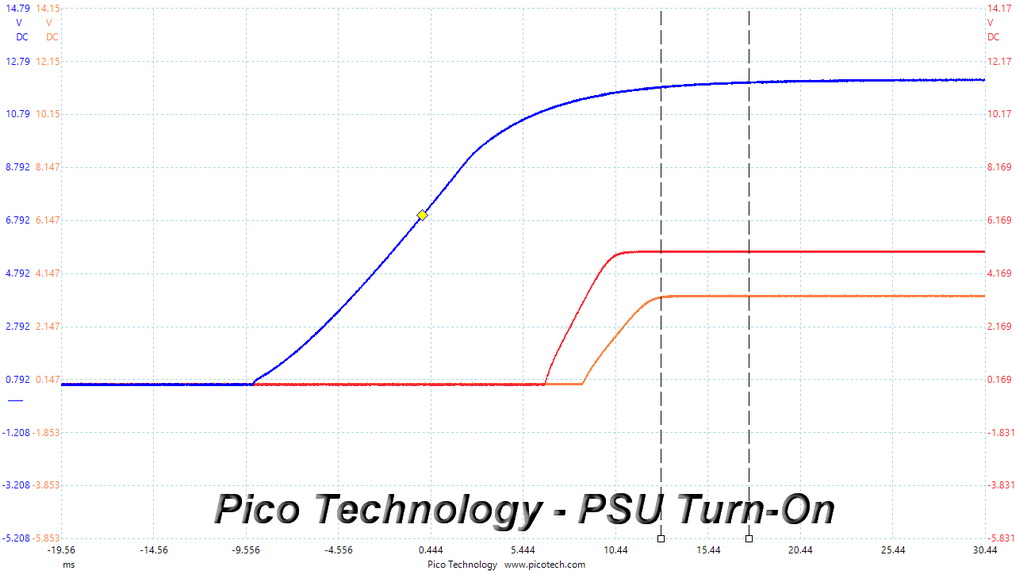
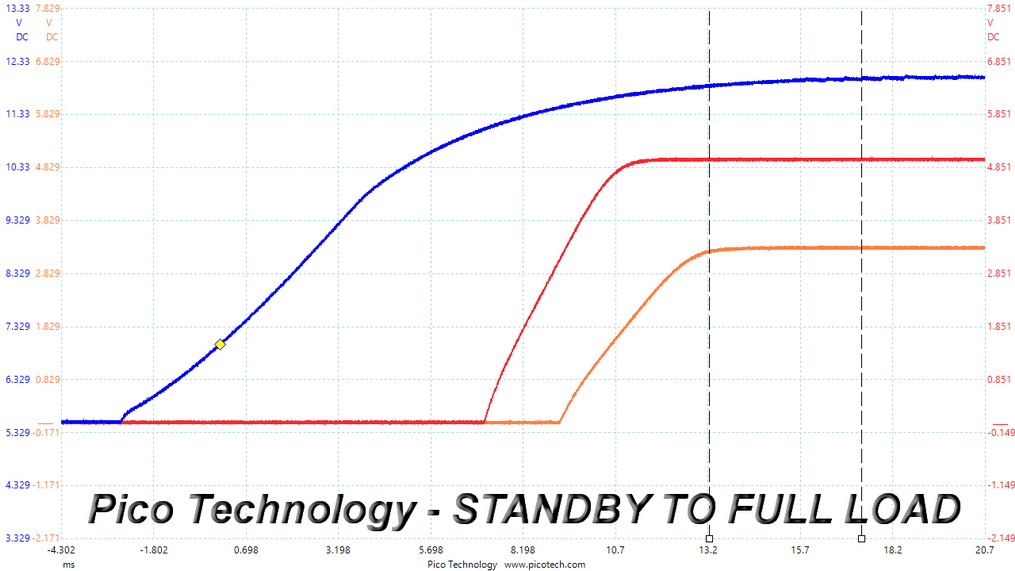
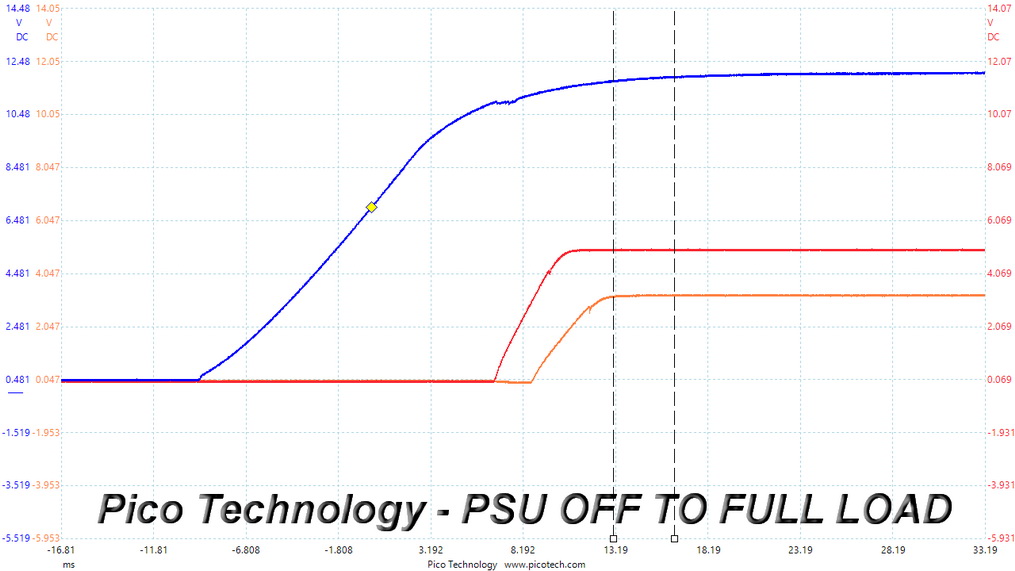
No problems here since the 3.3V rail is always lower than the other two.
Cross Load Tests
To generate the following charts, we set our loaders to auto mode through custom-made software before trying more than 25,000 possible load combinations with the +12V, 5V, and 3.3V rails. The deviations in each of the charts below are calculated by taking the nominal values of the rails (12V, 5V, and 3.3V) as point zero. The ambient temperature during testing was between 30 to 32 degrees Celsius (86 to 89.6 degrees Fahrenheit).
Load Regulation Charts
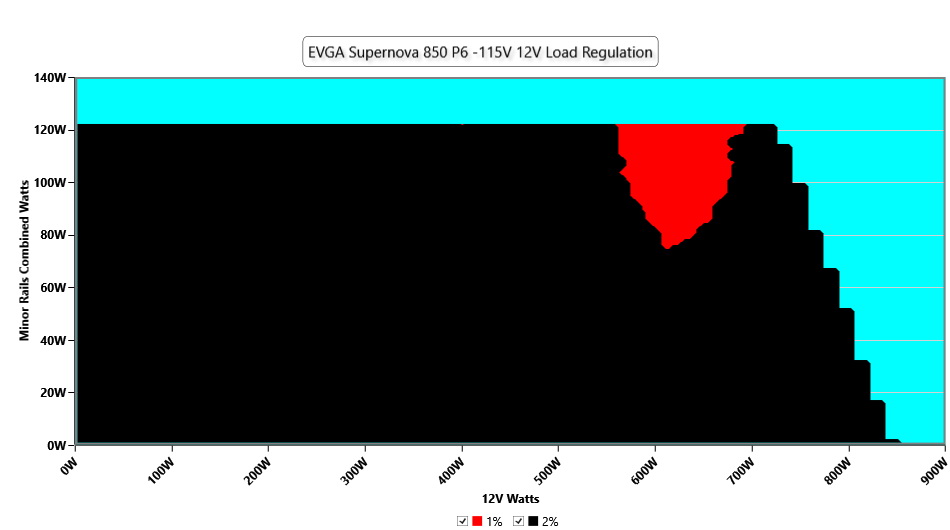
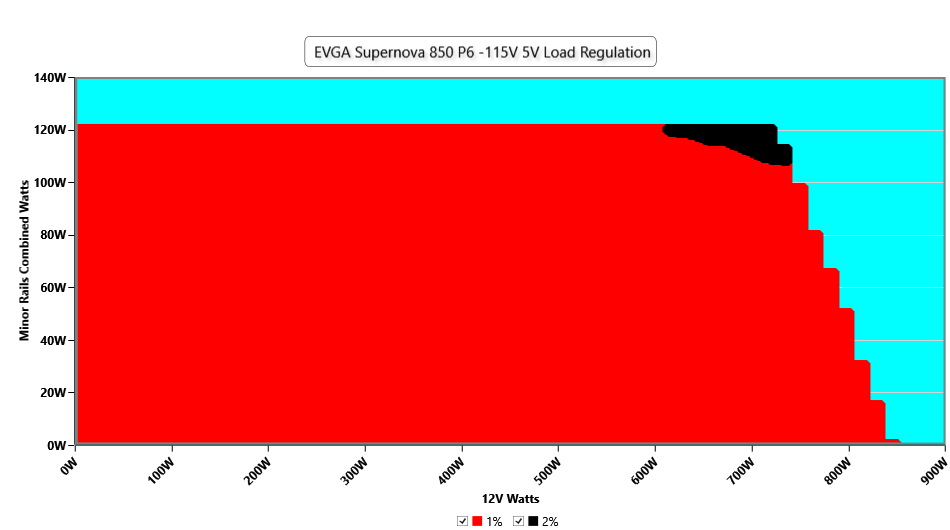
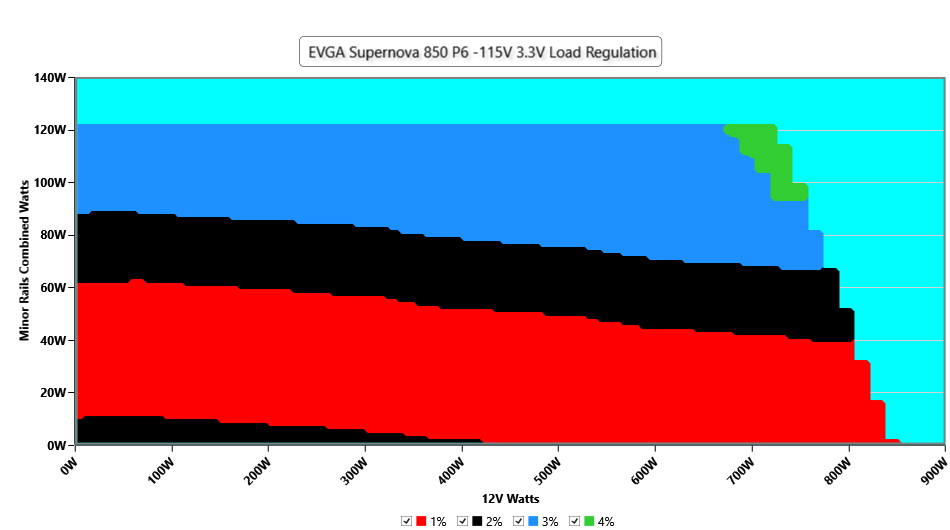
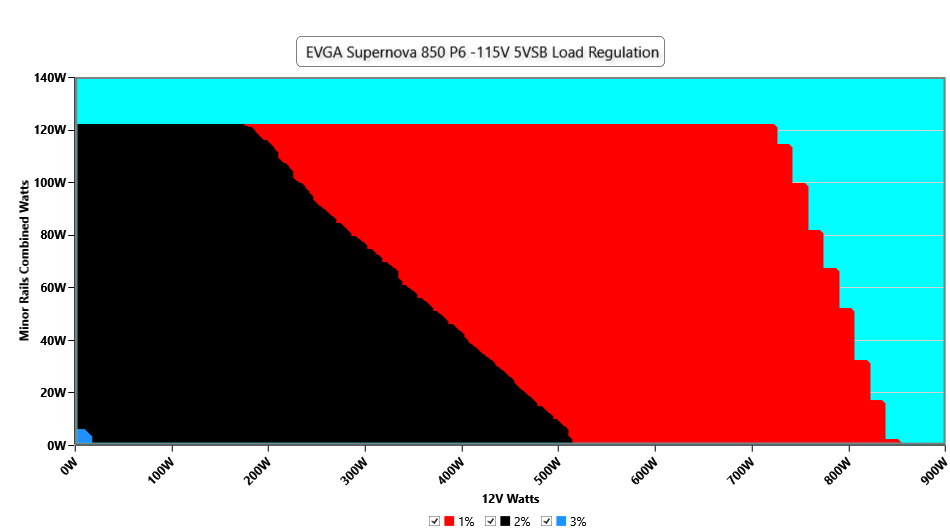
Efficiency Graph
Ripple Graphs
The lower the power supply's ripple, the more stable the system will be and less stress will also be applied to its components.
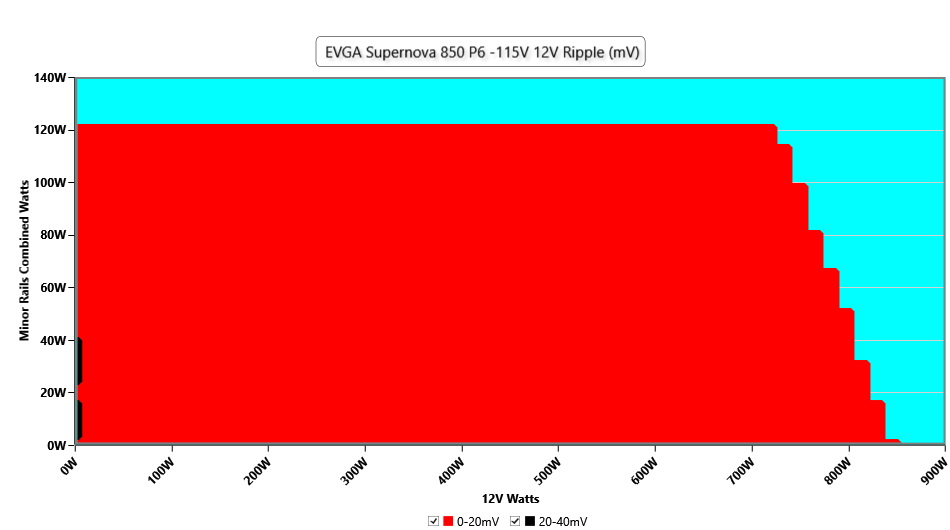
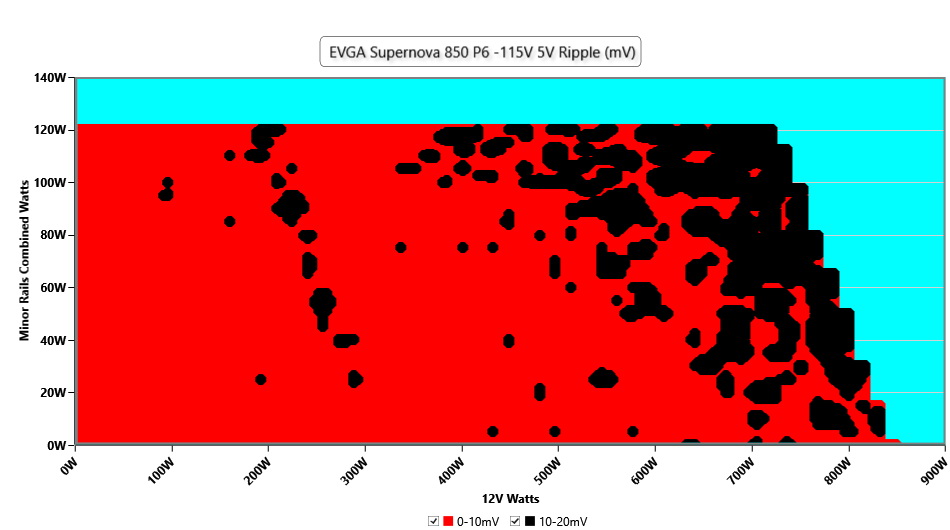

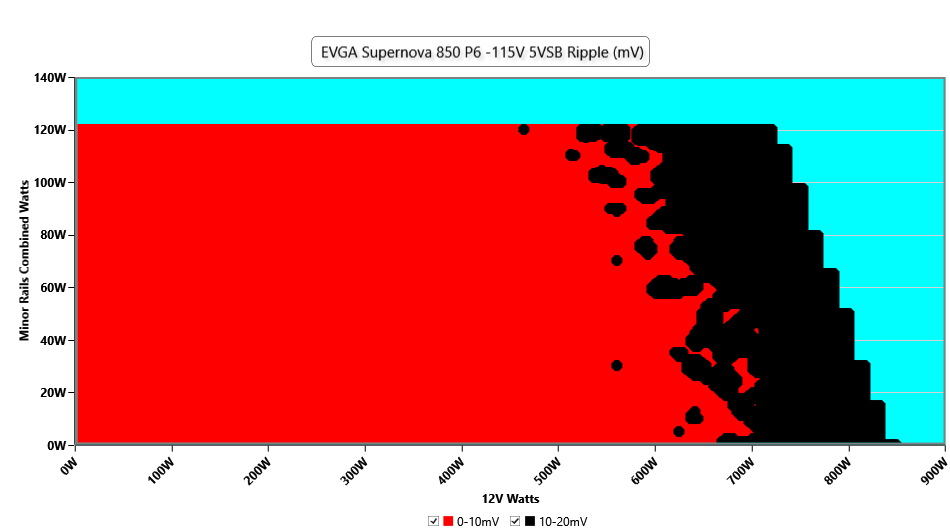
Infrared Images
We apply a half-load for 10 minutes with the PSU's top cover and cooling fan removed before taking photos with a modified Fluke Ti480 PRO camera able to deliver an IR resolution of 640x480 (307,200 pixels).
Get Tom's Hardware's best news and in-depth reviews, straight to your inbox.
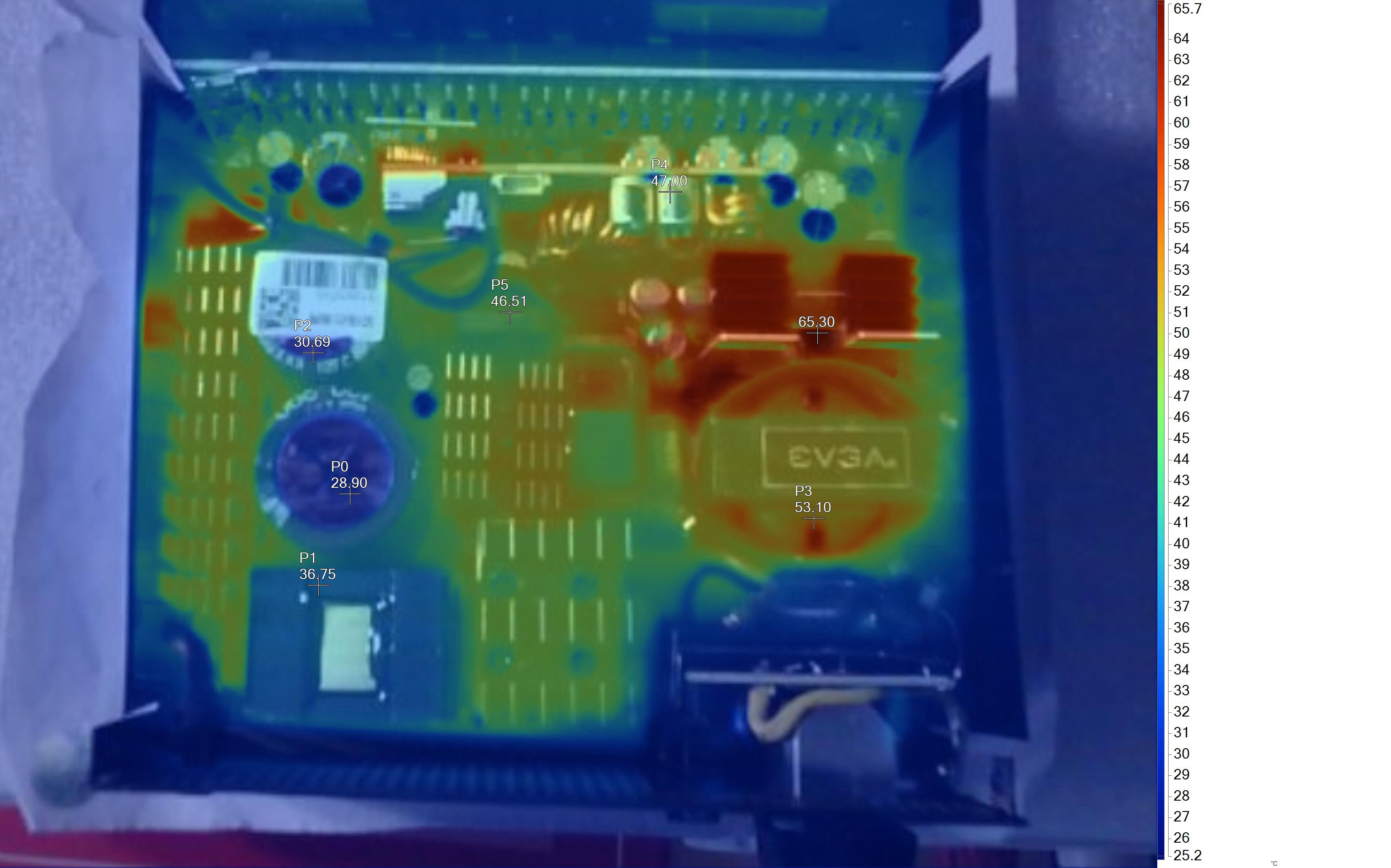
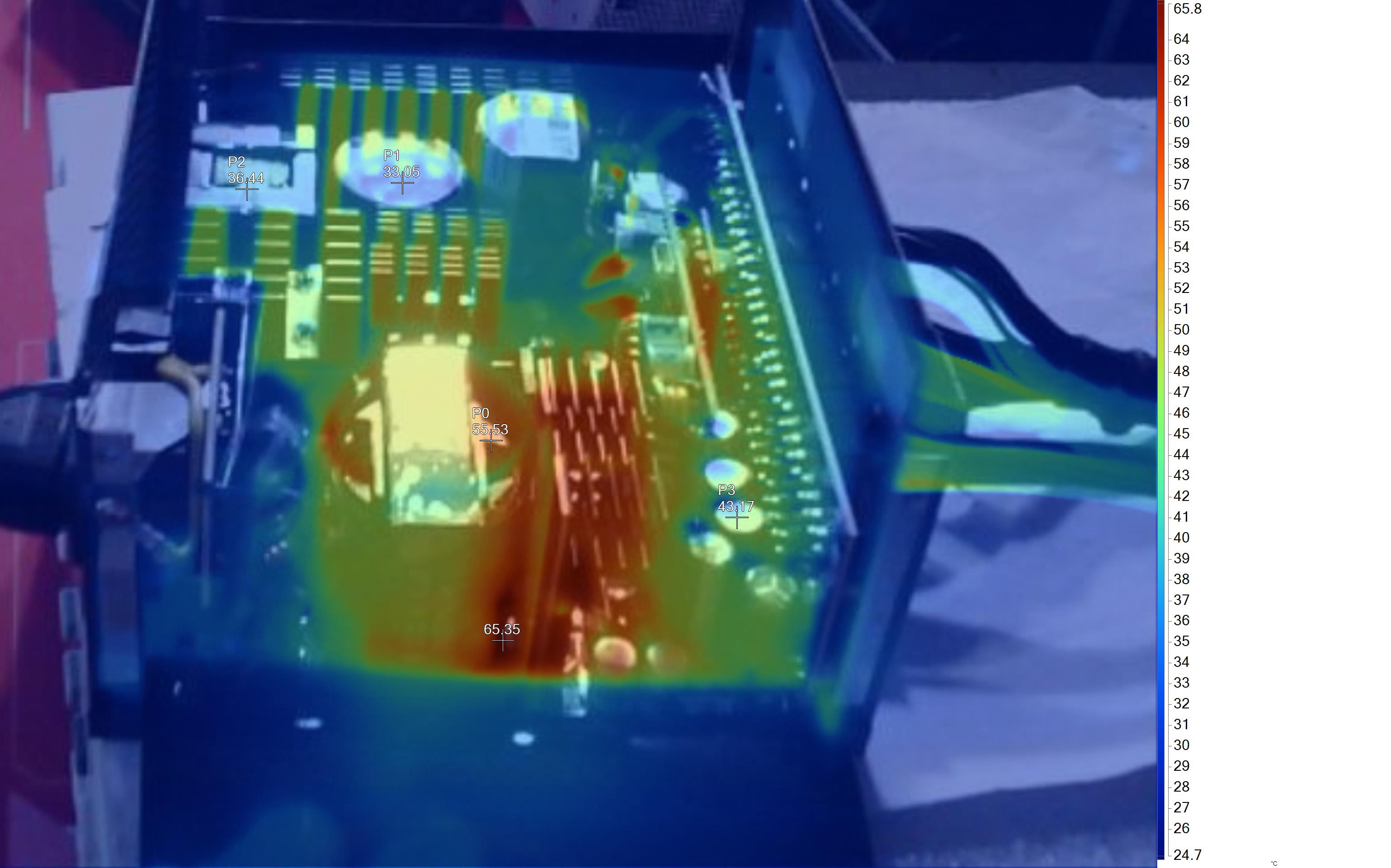
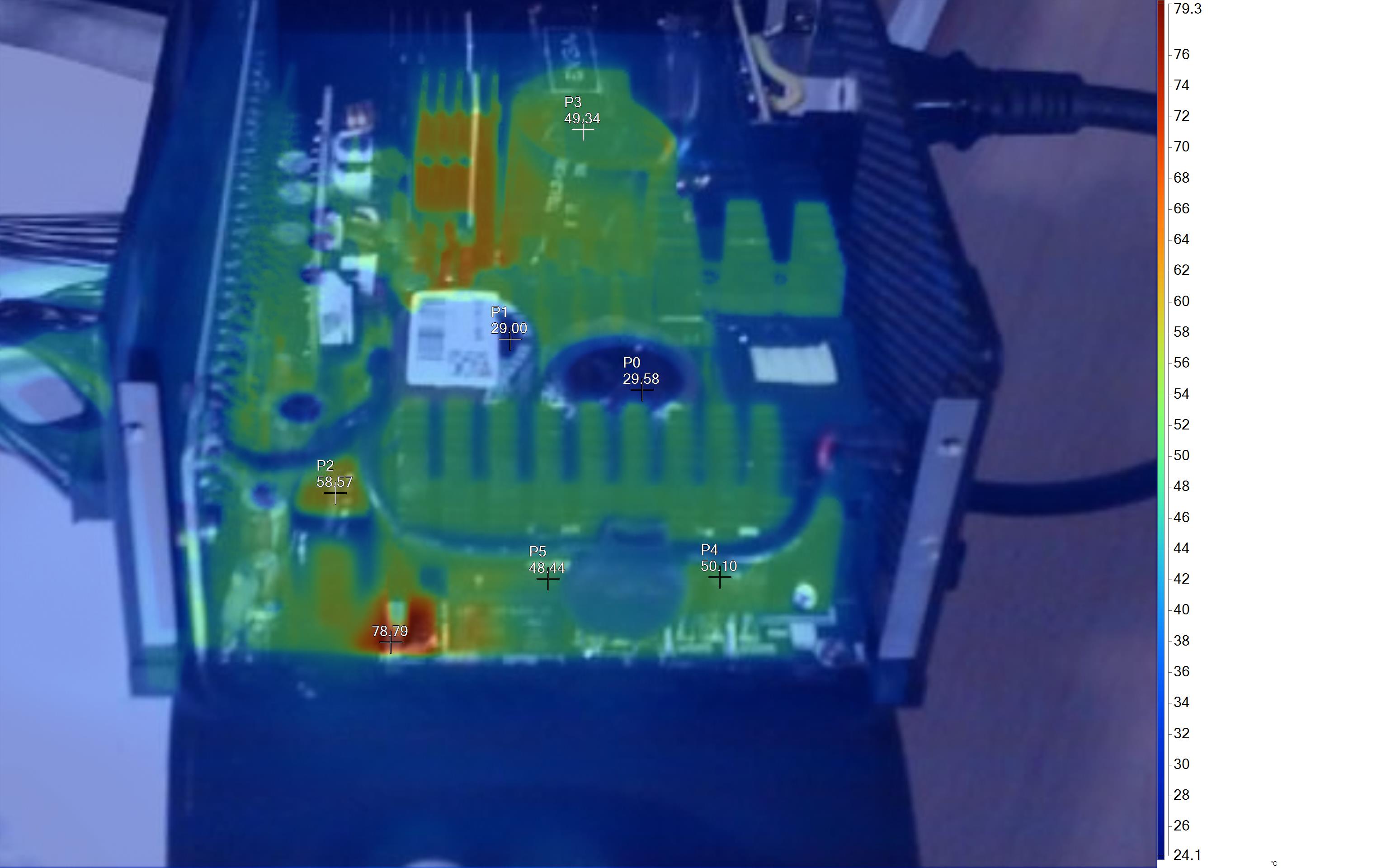
The temperatures inside the PSU, with a 425W load for ten minutes without active cooling, are normal. Similar to the 1000 P6 mode, the hottest parts are the 12V heat sinks and the area around the standby controller.
MORE: Best Power Supplies
MORE: How We Test Power Supplies
MORE: All Power Supply Content
Current page: Protection Features, DC Power Sequencing, Cross-Load Tests and Infrared Images
Prev Page Load Regulation, Hold-Up Time, Inrush and Leakage Current, Efficiency and Noise Next Page Transient Response Tests, Timing Tests, Ripple Measurements and EMC Pre-Compliance Testing
Aris Mpitziopoulos is a contributing editor at Tom's Hardware, covering PSUs.
-
Co BIY Thanks - I've been asking for this review.Reply
Hard to beat the Corsair RMx 850 right now when it is shipping direct from them at $115.
I think a discussion at the beginning of each review that hits on the right use case for the power supply would be helpful. Do I need a 850 Watt power supply ? Is there any advantage to going lower or is this supply just as efficient all the way down the ladder so that getting the optimum wattage isn't that important?
